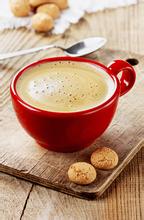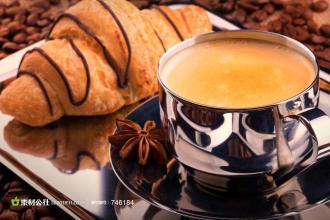Introduction to fine coffee beans with mild flavor and taste characteristics of Costa Rican coffee manor
This coffee producing place, coffee of all grades and types accounts for 1/3 of the global consumption and occupies a share in the global coffee market.
Place of origin, although Costa Rica faces natural disasters several times higher than other regions, it has enough acreage to make up for it.
There are many kinds of coffee here, but its industrial policy is large and cheap, so there is not much premium coffee, but it is a good choice for mixing other coffees.
One of the most famous is Mountain Costa Rica Coffee, which tastes mellow and neutral. It can be boiled directly or mixed with other kinds of coffee beans into mixed coffee. It is also a good choice.
Other kinds of Brazilian coffee, such as Rio and Parana, can be produced in large quantities because they do not require too much care. Although the taste is rough, it is a kind of high-quality and inexpensive coffee, which has its own standards because it is distributed all over the country and varies in quality (NO.2~NO.8 according to the number of sundries, NO.13~NO.19 according to the size of beans, and six grades according to taste). Almost all Arabica varieties are of good quality and stable in price. The most famous one is Costa Rica, which has been a necessity of blended coffee and is familiar to the public since ancient times.
Excellent Costa Rican coffee is called "extra hard beans". This kind of coffee can grow above 1500 meters above sea level. Altitude has always been a problem for coffee growers. The higher the altitude, the better the coffee beans, not only because the higher altitude can increase the acidity of the coffee beans and thus increase the flavor, but also because the night temperature at the higher altitude is lower, which can make the trees grow slowly, thus the flavor of the coffee beans is stronger. In addition, due to the high altitude drop caused by sufficient rainfall, it is very beneficial to the growth of coffee trees. However, its negative effect is to increase additional transportation costs, which is likely to make coffee production unprofitable. Costa Rica's coffee industry has adopted new technologies to increase efficiency, including the use of "electric eyes" to select beans and identify coffee beans of irregular size.
Tarrazu in Costa Rica is one of the major coffee producing areas in the world. The coffee produced is light and pure in flavor and pleasant in aroma. Goss.
With fertile volcanic soil and good drainage, Dariga is the first country in Central America to grow coffee and bananas because of its commercial value. Coffee and bananas are the country's main exports. Coffee was introduced into Costa Rica from Cuba in 1729. Today, its coffee industry is one of the well-organized industries in the world, with a yield of 1700 kg per hectare. Costa Rica, with a population of only 3.5 million, has 400 million coffee trees, and coffee exports account for 25 per cent of the country's total exports. Costa Rica has also benefited from the establishment of the Central American Institute for Agricultural Research (TurrialbaoftheCentralAmericanAgriculturalResearchInstitute, referred to as IAAC) in Tarasu, which is an important international research centre. The high-quality Costa Rican coffee with extra hard beans is called "extra hard beans". This kind of coffee can grow above 1500 meters above sea level. Altitude has always been a problem for coffee growers. The higher the altitude, the better the coffee beans, not only because the higher altitude can increase the acidity of the coffee beans and thus increase the flavor, but also because the night temperature at the higher altitude is lower, which can make the trees grow slowly, thus making the coffee beans have a stronger flavor. In addition, due to the high altitude drop caused by sufficient rainfall, is also very beneficial to the growth of coffee trees. However, while there are many advantages to growing coffee at higher elevations, the resulting additional transport costs must be taken into account, which is likely to make coffee production unprofitable. The Costa Rican coffee industry has adopted new technologies to increase efficiency, including the use of "electric eyes" to select beans and identify irregular-sized coffee beans over Costa Rican instant coffee. It's usually coffee beans and powder.
If you want to make your own cup of coffee, you first need to buy the right brewing utensils, and use a filter coffee maker or filter coffee funnel, a steam straw coffee maker or a squeeze coffee machine, or even the so-called traditional dripping method of large stalls, can be based on personal preferences. The best way for coffee powder is to grind the right amount of coffee beans into powder before drinking, which may feel troublesome, but if you get used to it, the feeling of trouble will disappear, followed by the pleasure of enjoying a cup of delicious and fragrant freshly ground coffee. Because if you buy ground coffee powder in a store, I'm afraid the coffee will deteriorate if you buy too much. Therefore, it is better to buy coffee beans. The method of grinding coffee beans will choose different grinding methods depending on the different coffee utensils used, usually medium to very fine grinding is more suitable. The amount of coffee powder varies according to your preferences, usually about 8 to 10 grams, and 15 grams if you want a stronger coffee flavor. If you want to enjoy a good cup of coffee, remember not to begrudge the coffee powder. The temperature of the water is very important to make a delicious cup of coffee. The ideal water temperature is 86 ℃. In this way, you can make a cup of delicious coffee. In brewing coffee should pay attention to the following points: 1. Boiling will make coffee bitter, so do not boil coffee, the appropriate brewing degree should be slightly less than 96 ℃. 2. Coffee can no longer be heated. When brewing, you should pay attention to only the amount you need to cook each time, and it is best to drink it when it is just cooked. 3. The best drinking temperature of coffee is 85 ℃. 4. Water accounts for 98% of a cup of coffee, so it is best to use filtered water to brew coffee, especially not chlorinated water. 5. don't reuse coffee residue, the brewed coffee grounds leave only unpleasant bitterness. 6. make the correct coffee grinding according to the coffee maker used. Too fine grinding will make the coffee more bitter and it will be easier to block the coffee maker. 7. If the grinding is too rough, the coffee will be tasteless. 8. In the case of filter punching, the dripping time of properly ground coffee powder should be 4 minutes at a time. 9. Recommended dosage: 2 tablespoons round tablespoon coffee powder / 6 ounces of water

Important Notice :
前街咖啡 FrontStreet Coffee has moved to new addredd:
FrontStreet Coffee Address: 315,Donghua East Road,GuangZhou
Tel:020 38364473
- Prev

Nutty Hawaiian Kona Coffee Flavor Flavor Manor characteristics of boutique coffee beans
Hawaii's most famous coffee bean and coffee producing area is Kona kona, which is located in the southwest of the Big Island, 20 miles long and 2 miles wide, covering the slopes of Hualalai and Mauna Loa. Only coffee beans grown in this area and subject to the most stringent certification standards can be sold under the trademark Kona. Today, coffee beans are produced by about 100 farms.
- Next

Introduction to the characteristics of the manor producing area of Indonesian Java coffee boutique coffee bean flavor
The fragrance fills the mouth. Exhale the aroma from the mouth again from the nose, the smell is very full. Maybe you will find it too overbearing, because it will quickly occupy your taste buds, your mind and even your soul. Why resist it? The life we live in is full of sour, sweet, bitter and astringent, so let the smell of coffee take away everything in the world. What we enjoy
Related
- Detailed explanation of Jadeite planting Land in Panamanian Jadeite Manor introduction to the grading system of Jadeite competitive bidding, Red bid, Green bid and Rose Summer
- Story of Coffee planting in Brenka region of Costa Rica Stonehenge Manor anaerobic heavy honey treatment of flavor mouth
- What's on the barrel of Blue Mountain Coffee beans?
- Can American coffee also pull flowers? How to use hot American style to pull out a good-looking pattern?
- Can you make a cold extract with coffee beans? What is the right proportion for cold-extracted coffee formula?
- Indonesian PWN Gold Mandrine Coffee Origin Features Flavor How to Chong? Mandolin coffee is American.
- A brief introduction to the flavor characteristics of Brazilian yellow bourbon coffee beans
- What is the effect of different water quality on the flavor of cold-extracted coffee? What kind of water is best for brewing coffee?
- Why do you think of Rose Summer whenever you mention Panamanian coffee?
- Introduction to the characteristics of authentic blue mountain coffee bean producing areas? What is the CIB Coffee Authority in Jamaica?

